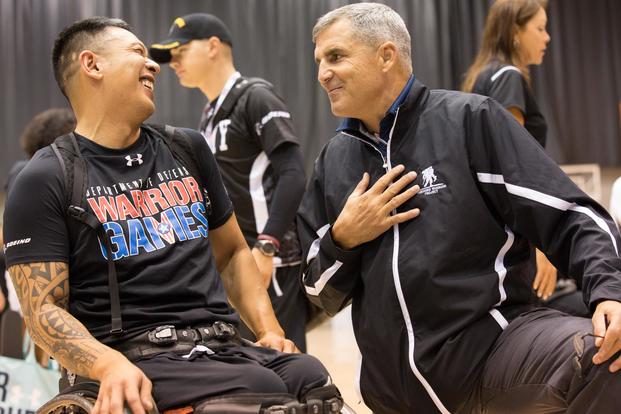
By Hope Hodge Seck
In 2015, Wounded Warrior Project seemed, in the world of veterans’ support organizations, to have it all: a compelling mission. Celebrity endorsements from the likes of Trace Adkins and Jimmy Buffett. Name recognition that went beyond the military community, thanks in large part to tightly produced and memorable TV ads. The kind of fundraising figures that most organizations in the space could only dream about.
Then, in late January 2016, a pair of damning high-profile news reports hit like a one-two punch, throwing the organization into turmoil. Citing whistleblowers, stories by CBS and The New York Times detailed allegations of waste and abuse, lavish all-hands conferences and unbridled spending on ticketed outings that did little lasting good for the veterans they purported to help. Previous reporting from Tim Mak, then at the Daily Beast, had detailed similar claims, but the reports published in January pushed the issue to critical mass.
Within months, Wounded Warrior Project’s two top executives — CEO Steve Nardizzi and COO Al Giordano — had been fired, and the organization itself was the subject of a congressional inquiry. Donations plummeted. In September 2016, Forbes published a pre-emptive obituary to the organization: “The Gutting Of Wounded Warrior: How To Kill A Charity.”
But, as it turned out, reports of the death of Wounded Warrior Project have been greatly exaggerated. The organization has yet to recover fully from a hemorrhage that saw fundraising drop from a peak of $373 million in 2015 to just $211 million in 2017. But newly released numbers for fiscal 2018 show a bounce in the right direction, up 16% to $246 million. That’s thanks in part to a soul-searchingly earnest restructuring effort helmed by CEO Mike Linnington, a retired three-star Army general who arrived at the organization in 2016 with a mandate to turn things around.
Restoring Faith
In the wake of what organization insiders call “the 2016 event,” WWP has cut significantly back on all-staff outings; moved away from pricey ticketed events in favor of addressing complex quality-of-life issues for veterans; made efforts to be more collaborative in the veterans’ organization community; and even tweaked its advertising strategy to tell a more positive story about veterans, an effort WWP says is calculated not to bring in the most advertising dollars, but to do the most good for the community.
“Obviously, we’re trying to regain trust with the warriors, first and foremost,” Linnington told Military.com earlier this year. “And secondly, with the American people who support our warriors.”
Among those who say WWP has regained their trust is Erick Millette, a medically retired Army staff sergeant who worked for the organization as a full-time public speaker and representative in the organization’s “Warriors Speak” program from 2013 to 2015. Millette is now best known as a whistleblower who went on the record to decry what he saw as WWP’s lavish spending and interest in nurturing its public image, rather than providing meaningful support to its constituents.
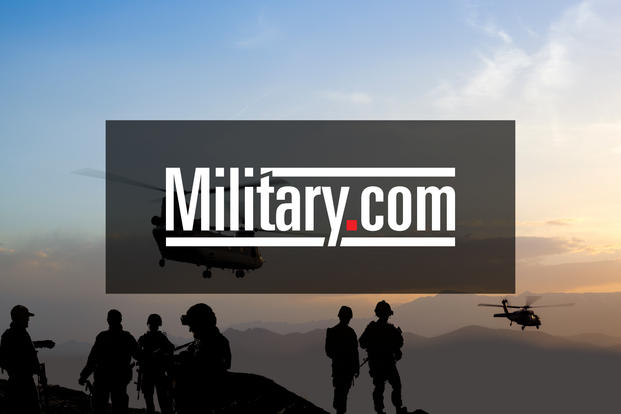
“They were using the smallest percentage of wounded veterans to suck money out of hard-working Americans,” he said.
But while Millette, who spoke with Military.com earlier this year, said he still thinks the organization tends to lean too hard on showcasing veterans with dramatic visible wounds in its publicity materials and public events, he also said he has observed a remarkable overall turnaround in the organization.
He noted approvingly that the organization has hired more mental health professionals to do follow-up with wounded warriors, and invested dynamically in meeting the needs of female veterans. As someone who lives with post-traumatic stress, Millette said he is aware of the wealth of good Wounded Warrior Project could do with its resources in that space.
“Before, you’d have a retreat and, after that, it was nothing. Now, they’re doing that follow-up, and they have the capacity to deal with the mental health issues,” he said. ” … Seeing them do that restores my faith in the organization.”
‘We had to rebuild’
Linnington, who retired from the Army in 2015 and served as the first permanent director of the Pentagon’s Defense POW/MIA Accounting Agency before taking the helm at Wounded Warrior Project, said he made the move over to the organization because of the positive impression it had made on him while he was still on active duty. As commanding general of the Military District of Washington and commander of Joint Force Headquarters-National Capital Region, a position he held from 2011 to 2013, he said he welcomed many arriving C-17 Globemasters transporting wounded veterans back to the United States from Landstuhl Regional Medical Center in Germany.
He was impressed, he said, that so many of those nighttime arrival flights would be greeted by WWP staff members, and that he’d also see WWP teammates visiting veterans at Walter Reed National Military Medical Center.
“I was always grateful for that mission,” Linnington said. “So when I saw what was going on in the media, I was, believe it or not, automatically attracted to try and help.”
Although detailed defenses of Wounded Warrior Project have been mounted — including a lengthy independent report from nonprofit expert Doug White, published in September 2016 — Linnington spends little time trying to relitigate the past. He merely notes that “a lot of what was reported was incorrect,” and that, in particular, the reported costs of travel and amenities at all-hands events were far overblown. For Linnington, the mission when he arrived at Wounded Warrior Project was not about exoneration; it was about regaining the lost trust of the veterans the organization was founded to serve.
“When the negative media event hit in January-February-March of 2016, public support dropped 50%,” he said. “Yeah. So we had to rebuild.”
It wasn’t just about lavish all-hands gatherings, although those quickly became a thing of the past. The organization slashed all-hands training costs from $987,000 in 2016 to $110,000 in 2019 for a staff of nearly 700, according to numbers provided to Military.com, in direct response to public criticism.
Ill Will
But people close to the organization also say that, as WWP expanded from a tiny organization distributing free backpacks to wounded veterans in the early 2000s to become one of the most well resourced and influential veterans organizations within a decade, it generated more than its share of ill will.
It was litigious, suing other veterans’ organizations that featured a logo that evoked its own, a service member in silhouette carrying a wounded comrade on his back. The organization was reportedly out of favor with some senior officials in the Pentagon, due to the public image it perpetuated of veterans as typically coming home from combat grievously wounded and with long-term needs. And it did not appear to prioritize collaboration with other veterans’ organizations, taking criticism for relatively small grants it made to support other groups and for passing up opportunities to join forces for advocacy and shared knowledge.
In all those areas, Linnington said Wounded Warrior Project is making strides. In 2018, the organization gave away $13.6 million in grants to other organizations. In an effort to narrow its focus, WWP has dropped some efforts in favor of supporting other organizations that specialize. It no longer invests, for example, in its TRACK college preparation program for wounded warriors, preferring to let Student Veterans of America own the space. SVA leaders joined WWP at the White House in April for the latter organization’s 12th annual warrior ride.
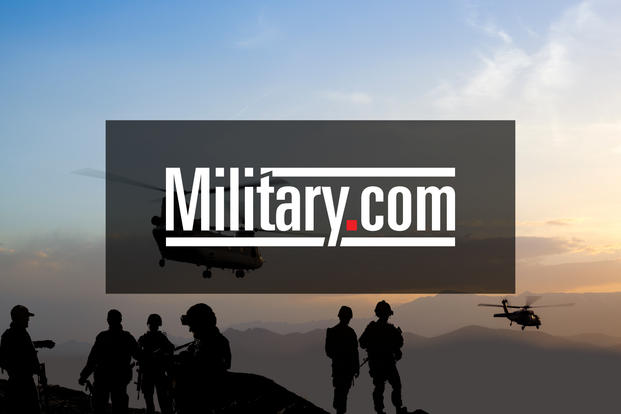
One significant ongoing organizational investment has provided for a two-week intensive post-traumatic stress and traumatic brain injury outpatient program at four hospitals: Massachusetts General Hospital, Emory University Hospital, Rush University Medical Center and Ronald Reagan UCLA Medical Center. Plenzler said spending on that program so far has totaled $100 million, with another $165 million committed over the next five years.
Linnington also said the organization supports the Elizabeth Dole Foundation in caregiver work, Veterans of Foreign Wars in assisting veterans with VA disability claims, and the National Military Family Association in caring for veterans’ families, among many others.
The organization also conducts copious surveys and focus groups among warriors, peer veterans’ organizations and others in the military community.
“We survey everything,” Linnington said.
According to data provided by Plenzler, a 2018 study on the organization’s reputation within the veterans service organization community found that 83% of participants considered WWP a respected part of the military and veterans nonprofit space, up from just 13% in 2017. The percentage of respondents who stated that WWP was effective at collaborating with other military and veteran nonprofits jumped from 63% to 85% from 2017 to 2018.
While Military.com was unable to review survey findings in full, Plenzler said the 2018 study also found participants overwhelmingly considered WWP to be effective in two areas on which organizational leaders have chosen to focus more sharply: advocacy for caregiver legislation (93%), and advocacy on legislation regarding veterans’ medical conditions related to burn pit exposure on deployments (86%).
The annual surveys of the wounded warriors the organization serves help direct its focus, Linnington says. They also help WWP track how the needs of veterans are changing with time.
Changing Needs
“The warriors that joined Wounded Warrior Project, you know, in 2003 are today 15 years older than they were when they joined. Our average age is 38 years old,” Linnington said. “So the needs of our population when that average was 27 years old is different than it is at 38, and it will be different when it’s 48.”
With health issues due to toxic exposure becoming an increasing concern for veterans, WWP has invested some $620,000 since fiscal 2017 toward research, partnering with Vietnam Veterans of America (VVA) and the Tragedy Assistance Program for Survivors, or TAPS, to study disease linkages, build awareness and create a “tiger team” of organizations to develop ways to help affected veterans and their families.
“When TAPS contacted us a few years back to say the majority of active-duty deaths they were seeing were suicides and rare cancers that young people should not be getting, we started investigating and funding,” Plenzler said in an email. “TAPS believed these cancers were due to [toxic exposure]. We knew VVA had done pioneering work on Agent Orange, so we created a collaborative grant to pair them with TAPS to start gathering data on [toxic exposure] and to help ensure trans-generational knowledge transfer from the Vietnam-era generation of veterans to today’s post-9/11 generation.”
Linnington said the organization is also making a point to be part of conversations involving the “Big Six” — the congressionally chartered veterans service organizations including American Legion and VFW — and to be present for regular convenings with the Defense Department and the Department of Veterans Affairs.
As WWP has worked to become more collaborative with other organizations, Linnington indicated it has also pulled back from the aggressively protective posture regarding brand and logo that drew criticism in the past.
“We wrap our arms around those that want to help veterans now, versus looking to protect our brand at every inch and ounce of measure,” he said.
The organization will still take action in cases of suspected fraud, he said.
A More Hopeful Message
Regarding the criticism that WWP’s portrayal of veterans in the past overemphasized traumatic wounds and veterans in need of lifelong help and support, Linnington said the organization’s advertising approach is now different.
“We’ve changed that too, honestly,” he said. “We focus our advertising campaign on warriors that have succeeded. It’s really about the resilience, the exceptionalism of our warriors.”
While WWP’s portrayal of veterans has never stripped them of their dignity, some ad campaigns in the early 2010s emphasized images of wounded warriors in the context of caregivers and included interviews with vets discussing daily struggles and needs that went unmet. One 2013 commercial, “Sacrifices,” featured footage of a veteran with severe traumatic brain injury struggling to walk assisted and to enter a car, and of another vet with body-encompassing burn injuries reaching for his prosthetic ears to put them on.
A current ad campaign, “I am Living Proof,” featured in a number of bold bus-stop ads near WWP’s Washington, D.C., headquarters, shows wounded vets standing in a posture of confidence.
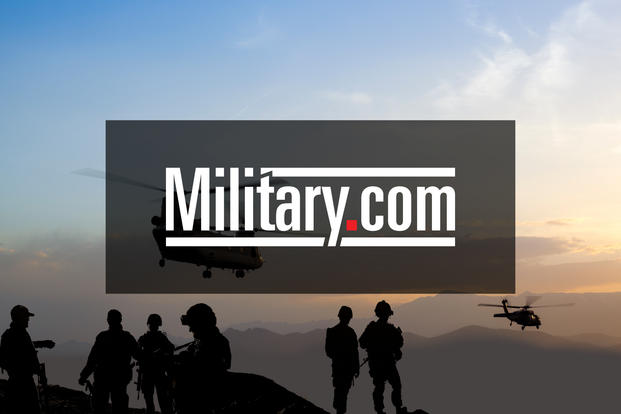
“Wounded Warrior Project was there when I needed them most,” says another ad, featuring veteran Chris Wolff, his hand on the wheel of his chair as if poised for action.
Both ad campaigns depict a real part of the wounded veteran experience, and WWP staff acknowledge that donors respond more to portrayals of those with the greatest need. But Linnington maintains it’s not just about the bottom line for him.
“We have met with DoD a couple times, when I first came on board, to talk about how we can help inspire young people to serve,” he said. ” … So we’ve tried to paint service as a good thing and, I think if you look at the exceptional nature of the young people that are joining the military today, we’re seeing a shift now in a higher propensity to serve, I think, over the last year or two.”
Notably, at its lowest point following the whistleblower reports and leadership churn, WWP’s funding still dwarfed that of virtually every other organization in the space. In fiscal 2016, the organization’s revenue exceeded $226 million; the closest runner-up was Disabled Veterans of America, with nearly $135 million. Linnington made clear that he wants to see the organization continue its climb out of a fundraising valley but said he is more concerned about fulfilling the mission than making up numbers.
“If you look at our 990 [annual IRS financial filing], we went from $380 million a year to $200 million. That’s a pretty significant drop in a short period of time,” he said. ” … Will we ever be 380 again? I don’t know, and frankly, that’s not what I’m worried about. What I’m worried about is, how can we be the most effective in meeting the needs of our warriors in whatever resources we have?”
Signs of Improvement
That said, there are clear indications that the organization is improving its financial practices. In July, along with the publication of a new financial statement for fiscal 2018 showing revenues of $246 million, WWP received an updated score from the watchdog organization Charity Navigator, up to 86.45 out of 100 from 86.02 the previous year. While the organization keeps a rating of three out of four stars, the numerical score reflects marginal improvements in program expense growth, Magdalena Kurnyta, a Charity Navigator associate program analyst, told Military.com.
And though critics argue that the standards used by watchdog organizations to assess nonprofits are overly subjective and sometimes unfairly punitive, staff with two accountability groups who spoke with Military.com were generally bullish about Wounded Warrior Project’s practices and outlook.
Kurnyta noted the organization had a near-perfect score in transparency: 97 out of 100. WWP also put up strong numbers in financial health, with controlled spending on administrative expenses and a healthy reserve of capital, which speaks to the organization’s ability to sustain itself over time. The group did lose points on its fundraising score, with roughly 22 cents spent to make a dollar, per the most recent available data.
“We’re looking for under 10 cents,” she said.
Charity Navigator’s rating for WWP has fluctuated over the years: It dipped down to two stars in 2010 as the organization grew, then briefly rose to a full four stars in 2017, reflecting the delayed arrival of 2015 data. Kurnyta said the watchdog group published a “low-concern” advisory for WWP in 2016 as staffing scandals made headlines, but never stopped rating the organization.
Under the Charity Watch rating system, Wounded Warrior Project has a modest C+, up from a C in 2015, said Daniel Borochoff, the accountability organization’s president. He noted, approvingly, that as of 2018, 64% of WWP spending goes to fund programs, up from about 54% in 2016. Ideally, though, the ratio should be higher. (Linnington said more than 72% of WWP spending currently goes toward programs.)
Like Charity Navigator, Charity Watch is critical of WWP’s fundraising efficiency, which it considers to be on the low end of acceptable. The group has also historically dinged WWP for having so much capital in reserve — at one point, Borochoff said, it “socked away” almost one-third of what it brought in. But he acknowledged that was likely a function of WWP’s phenomenally rapid growth and expansion.
“Donors would be unhappy that so much of their money wasn’t being used given the plight of veterans,” he said.
Borochoff also said, however, that despite the public scrutiny, Wounded Warrior Project has always had better business practices than many groups in the space, even some with a good reputation in the community.
“It’s like walking through a minefield, donating to an efficient veterans charity,” he said. “I find it frustrating when you see these solicitations, and they ask you to help a needy veteran, and you look into the finance and see most of the money is actually being spent educating the public that injured veterans have needs, rather than meeting the needs.”
Looking Ahead
During WWP’s nadir and through its turnaround, its roster of wounded warriors and “family support members” has only grown — a fact that speaks as much to the persistent and growing need as it does to the organization’s success in the space. At the end of 2015, there were 96,695 individuals in WWP’s database; by the end of 2018, there were 155,302, with growth staying fairly consistent year-over-year.
The organization has previously been criticized for touting a wide network of veteran members, many of whom were inactive and had received few or no services from Wounded Warrior Project. But Linnington said the organization is closely tracking engagement, and estimated that 30% of members were actively engaged in WWP community events or taking advantage of free programs.
“We have 55 peer support groups across the country that meet regularly,” he said. “These are groups that just get together over a pizza and a soda, to talk about the issues that are affecting them and their families, and look for ways to support each other.”
WWP has also pressed forward in its role as a legislative advocate, recently mounting a campaign to expand an adaptive housing benefit available to veterans — legislation named after longtime WWP staff member Ryan Kules.
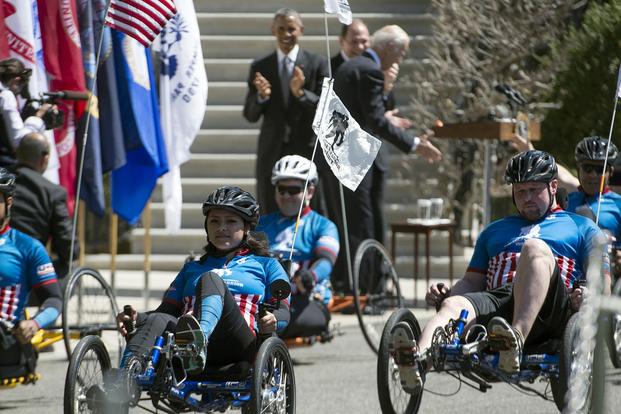
“The report I issued on spending at the Wounded Warrior Project highlighted a number of concerns that needed to be addressed,” he said in a statement. “That report also made clear that the Wounded Warrior Project had made some positive steps to regain the public’s trust. I’m optimistic that the organization’s leadership will continue to improve the organization, which will help to serve the military men and women who have served us.”
Millette, the former WWP staff member who publicly blew the whistle on the organization, said his decision to speak out came at great personal cost. His marriage fell apart as the result of the pressure, he said; he received personal threats. He changes his habits and routine around Jacksonville, Florida, he said, to avoid running into former organization co-workers.
But, he says, he doesn’t regret what he did; he still believes his assessment of WWP at the time was accurate and his intervention necessary.
“I have zero regrets, and I would do it again,” he said. “Veterans, our lives, literally, depend on it.”
Millette also marvels at the way the organization has overhauled itself and rebuilt, even as many predicted that it would crumble under the pressure. With Linnington at the helm, he said, WWP inspires confidence and appears to be working diligently to meet the real needs of its veterans population.
“Four years ago, I would have told you to keep your money in your pocket and take it somewhere else,” he said. “[Now], I would tell you to look at the organization, the changes they’ve made and make an educated decision. Look at how they’re focused on the real, important issues that have to do with veterans, and go from there.”





